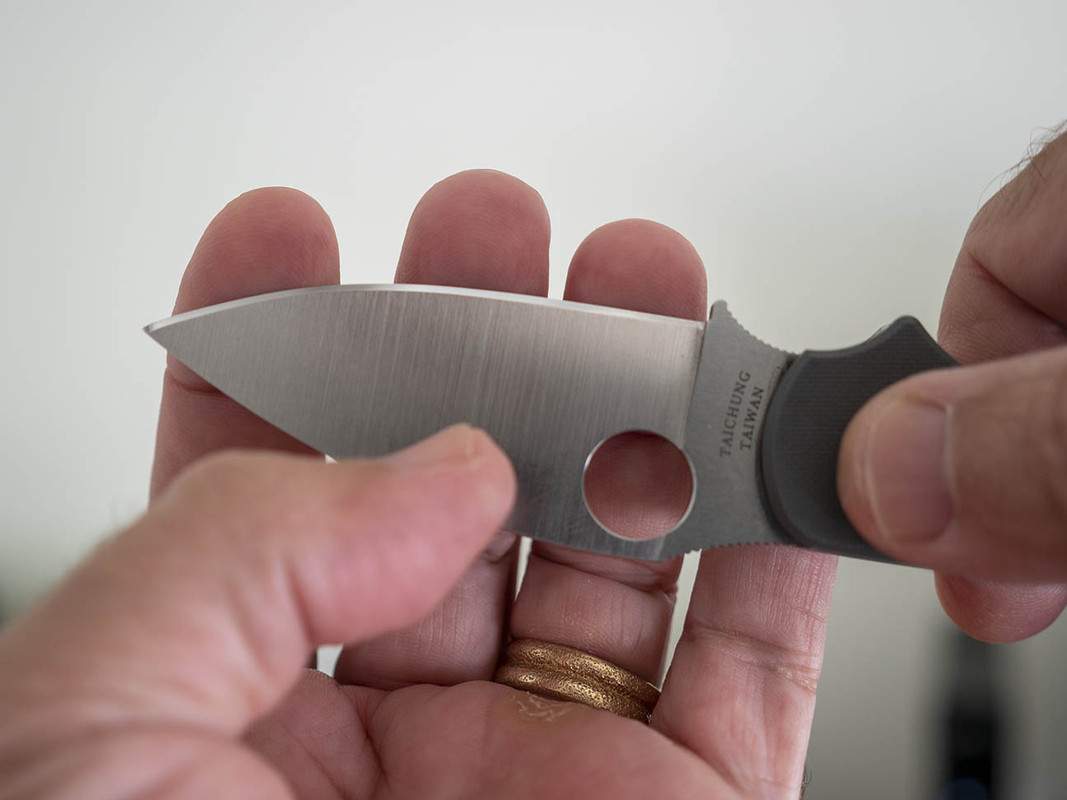I got a Work Sharp Ken Onion w/ blade ginder attachment. Set it up last night and in a few hours I have 5 knives that will shave hair. Pretty impressive, considering I don't think I ever sharpened a knife to shaving sharp in my life.
Sharpening 101 - you need to develop a burr on the entire length of the knife before you try to sharpen it. I'm having a little trouble figuring out when the burr is present. Obviously I'm doing something right if they shave and cut paper as well as they are, but I don't want to grind my blade down unnecessarily. I might be going past the burr point pretty well. I'm trying to look at the edge with a 10x, seemingly piece of junk, loupe and I can hardly see the burr forming. You can somewhat see it with the naked eye, somewhat feel it, but it's difficult and seems like it goes away once I start molesting it. I've tried other things like brushing the burr edge with a q-tip to see if it grabs the cotton fibers. No wonderful method for figuring things out. The guys in the work sharp video hang a fish hook off their burr; I'm no where near this. Not sharpening any super steel. Common knives - Victorinox boning knives, browning fillet knife, wusthoff kitchen knives.
The book says you should do 6-8 passes with the coarse belt to get a burr. I'm kind of assuming that means for knives that have already been sharpened with the work sharp and have the work sharp profile already established on the edge. It's taking me 15-25 passes on the same side to get a burr that I'm comfortable with. First knife took me 30 passes. Don't know if I'm going way too far.
Thoughts?
Thanks!
Sharpening 101 - you need to develop a burr on the entire length of the knife before you try to sharpen it. I'm having a little trouble figuring out when the burr is present. Obviously I'm doing something right if they shave and cut paper as well as they are, but I don't want to grind my blade down unnecessarily. I might be going past the burr point pretty well. I'm trying to look at the edge with a 10x, seemingly piece of junk, loupe and I can hardly see the burr forming. You can somewhat see it with the naked eye, somewhat feel it, but it's difficult and seems like it goes away once I start molesting it. I've tried other things like brushing the burr edge with a q-tip to see if it grabs the cotton fibers. No wonderful method for figuring things out. The guys in the work sharp video hang a fish hook off their burr; I'm no where near this. Not sharpening any super steel. Common knives - Victorinox boning knives, browning fillet knife, wusthoff kitchen knives.
The book says you should do 6-8 passes with the coarse belt to get a burr. I'm kind of assuming that means for knives that have already been sharpened with the work sharp and have the work sharp profile already established on the edge. It's taking me 15-25 passes on the same side to get a burr that I'm comfortable with. First knife took me 30 passes. Don't know if I'm going way too far.
Thoughts?
Thanks!


